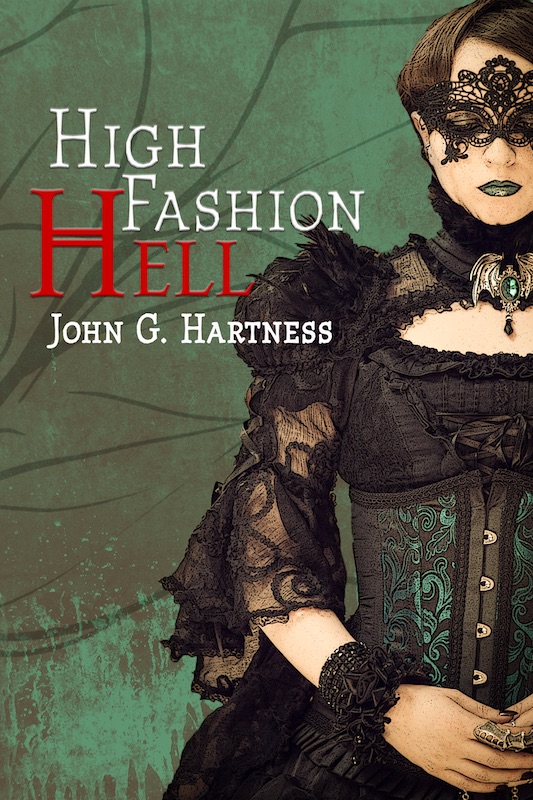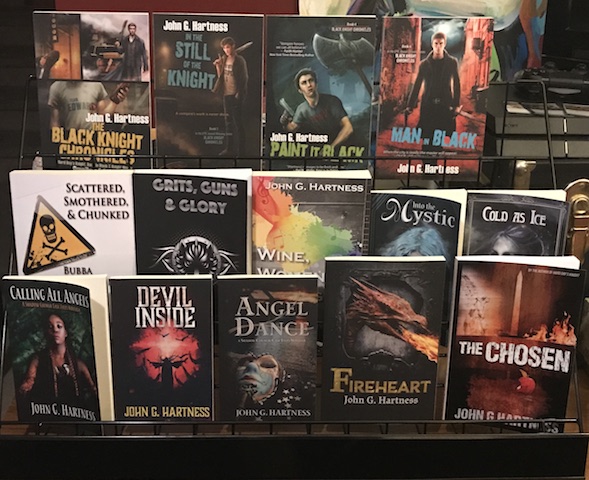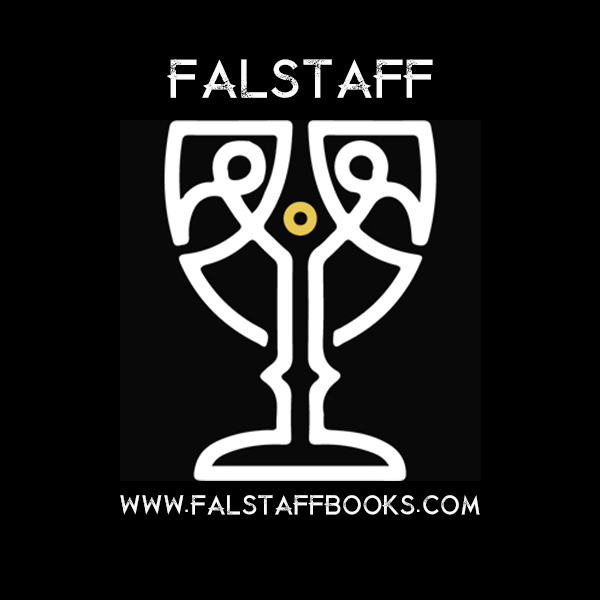
by john | Feb 18, 2015 | Evolution of Evil, Guest Blogs, Writing
Monsters, Trailer Parks and Truck Stops
By Gail Z. Martin
People who aren’t from Pennsylvania picture two cities: Pittsburgh and Philadelphia. If you’re from PA, you know that the state’s whole center is farmland and nearly uninhabited forest (drive across I-80 sometime and you’ll see what I mean). Where I grew up, in the top corner near Lake Erie, not only do most people have a taxidermist on speed dial, but I’m pretty sure the car dealerships not only sell pickup trucks with gun racks as standard equipment, but I think the guns may be part of the package. Schools and businesses officially close for the first day of Deer Season. Most people I knew could field dress a deer with a pocket knife.
This matters because there’s urban horror and then there’s rural horror. They play off different kinds of fears. Urban horror plays off the anonymity of the big city, the strangers, the manmade caverns of concrete and the trackless tunnels underneath, dark alleys and seedy neighborhoods. Rural horror is a little more primal: wild animals, crazy loners holed up in caves or cabins, the brutal Darwinism of the elements and the fear of what you find in the vast, empty darkness, far away from street lights or cell phone signals.
My story for Big Bad 2 was inspired by getting lost in rural areas, and unexpected inspiration at a truck stop.
We’ve still got family in Northwestern PA, even though we’ve been in North Carolina for nearly 20 years. So we have worn a groove in I-77 and I-79 North over the years, heading nearly all the way up to the shores of Lake Erie. We’ve got the drive down to a science, and we trade off drivers every two hours at our favorite places to stop. One of those is a Flying J truck stop in Fort Chiswell, VA. It’s one of those restaurant/gas station/convenience store/gift shop kind of places, and one day, as I was getting a huge cup of coffee for the road, one of their t-shirts caught my eye.
“Mess with me, and you mess with the whole trailer park.” The guy depicted on the graphic looked like someone out of Cabin in the Woods, not the shell with the most gunpowder, if you know what I mean. But for some reason, that statement of backwoods solidarity got me thinking. What if the trailer park was full of monsters? Hmm.
Getting lost in a city can be scary if you end up a bad neighborhood. Getting lost in rural areas means you’re not in anybody’s neighborhood. Three 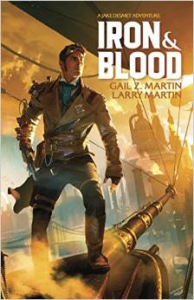 situations made an impression on me. In one case, it was late at night, we were back home in what should have been our stomping grounds, and we missed a turn on a rural road. No problem, we had a pretty good idea of where we were, and we took the next left, expecting it to cut across. The blacktop road went from two lanes to one lane, then became a gravel road, then a dirt road. This was before GPS. I thought our odds were good of ending up in front of someone’s barn, facing a big German Shepherd and the business end of someone’s shotgun.
situations made an impression on me. In one case, it was late at night, we were back home in what should have been our stomping grounds, and we missed a turn on a rural road. No problem, we had a pretty good idea of where we were, and we took the next left, expecting it to cut across. The blacktop road went from two lanes to one lane, then became a gravel road, then a dirt road. This was before GPS. I thought our odds were good of ending up in front of someone’s barn, facing a big German Shepherd and the business end of someone’s shotgun.
Now we probably would have been OK. We were on home territory, and that meant we could have played the “Do you know my parents, aunts, cousins, cousin’s sister-in-law’s aunt’s neighbor” verification-by-relative game. But it’s a scary thing bouncing down a road without street lights that isn’t on the map and where there are no signs to tell you which road you’re on if the mile markers aren’t enough for you to know. There’s a whole lot of dark emptiness out there.
Another time, we had to get off I-79 onto a detour in West Virginia because of road construction and we somehow lost the detour. This is a bad thing if you’re not from there, and we aren’t. See, there are what’s called “hollers”, or mountain valleys. There’s the front of the holler and the back of the holler. First rule: you don’t go into the holler if you don’t belong there. Second rule: you don’t come out of the back of the holler if you go in there and you don’t belong there. It was a ‘paddle faster, I hear banjos’ kind of moment.
Then there was the time I was taking my daughter back to Penn State, which is in the middle of the state and the middle of nowhere. We missed a turn (ok, maybe I shouldn’t navigate), and said ‘that’s OK, we’ve got GPS’. Yeah well. Instead of four-lane highway, we took a charming scenic detour through increasingly smaller hamlets on one-lane roads that were wavier than pan-fried bacon. I was fine with it—it was daylight, we had a full tank of gas, and it wasn’t like we were going to run into cow gangs from the wrong side of the tracks. There were even places where the cell phones kinda worked.
But my daughter, raised in Pittsburgh and Charlotte, got more and more nervous the farther we got from ‘civilization’. When I stopped for gas at a no-name station in a tiny one-traffic-light town and had to pay inside (horrors!) she actually locked the car doors until I came back. (Just because everyone in sight is wearing camo does not mean you’re in danger. Up there, they sell camo lingerie and camo baby onesies, just sayin’.) But her nervousness outside her comfort zone got my writer brain working on what makes us afraid.
Put it all together, and you get “Old Nonna,” my story for Big Bad 2.
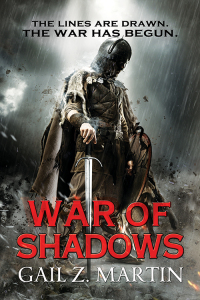
About the Author:
Gail Z. Martin is the author of the new epic fantasy novel War of Shadows (Orbit Books) which is Book Three in the Ascendant Kingdoms Saga; Vendetta: A Deadly Curiosities Novel in her urban fantasy series set in Charleston, SC (Solaris Books); and Iron and Blood: The Jake Desmet Adventures a new Steampunk series (July 2015, Solaris Books) co-authored with Larry N. Martin. She is also author of Ice Forged and Reign of Ash in The Ascendant Kingdoms Saga, The Chronicles of The Necromancer series (The Summoner, The Blood King, Dark Haven, Dark Lady’s Chosen) from Solaris Books and The Fallen Kings Cycle (The Sworn, The Dread) from Orbit Books. Gail writes two series of ebook short stories: The Jonmarc Vahanian Adventures and the Deadly Curiosities Adventures and her work has appeared in 20 US/UK anthologies.
Find her at www.AscendantKingdoms.com, on Twitter @GailZMartin, on Facebook.com/WinterKingdoms, at DisquietingVisions.com blog and GhostInTheMachinePodcast.com, on Goodreads https://www.goodreads.com/GailZMartin and free excerpts on Wattpad http://wattpad.com/GailZMartin.
by john | Feb 17, 2015 | Guest Blogs, Writing
Welcome back Selah Janel to talk about Women in Horror Month! For more Selah, check out her website.
Although I grew up something of a scaredy-cat, admittedly I’ve always been drawn to the horror genre. I was the one always begging friends to tell me blow-by-blow details of the movies I wasn’t allowed to see, the one reading the descriptions of horror movies off boxes in video stores when my parents weren’t looking, the one who may or may not have run an underground library for R.L. Stine titles and urban legend collections out of my locker in Junior High. I think we take for granted that women seem to be designated as chainsaw fodder or final girl in the genre, when there are truthfully a lot of other roles if we keep an open mind and are open to a lot of different titles. I also don’t think it’s that unusual that women make awesome horror authors. I could give you the standard answer of how we’re emotional creatures and at the end of the day we always have to be aware while walking down the street, when we’re meeting someone new, when we have to walk away from a table and leave our drink unattended, when protecting our children, etc.
However, I think there’s another reason women of my particular generation are drawn to horror and happen to be good at it. It’s a little thing I like to call the 1980’s.
Stay with me here. Yes, the eighties were time when slasher films ruled and women’s roles tended to be reduced to victims for the most part, but that’s not what I’m talking about. To really get why my ilk are into the genre, you have to go to a whole other medium entirely: children’s cartoons.
Eighties nostalgia has gotten a lot of flak over the years. Yeah, a lot of the cartoons were made off toy lines and they weren’t always drawn very well. A lot of the Saturday morning installments didn’t even last all that long, if a whole season. What they were, however, is utterly, completely, cracked out.
Let’s just take a look at some of my early influences, eh? The first Care Bears movie features a book that could be considered a riff off the Necronomicon. Heck, the second movie contains shapeshifting demons and a variation on possession. Yes, the villains are either dealt with or reformed, but can you imagine that even existing in a theatre for four-year-olds these days? My Little Ponies had gateways to other dimensions and a dark ooze that nearly destroyed Ponyland. Rainbow Brite had her color drained on at least one occasion, a Lady Lovelylocks villain went into a deep coma-like sleep and nearly died. One of the Misfits in Jem nearly died from strange plant scratches. She-Ra was repeatedly kidnapped, drained of her powers, almost-tortured, and who knows what else. The Ewoks were forced into slavery on their cartoon at certain points, and one of the girl Ewoks learned quickly not to try to play magic to her advantage. Villains and sidekicks alike nearly had their souls sucked out in a few franchises and it was just another Saturday for all us little girls watching. For the puppet crowd, Jim Henson’s The Storyteller featured devils and heroine-beating trolls, and the Skeksis of The Dark Crystal haunted our nightmares for ages because of their soul-sucking abilities and we loved them for it. Disney regularly played cartoons from their vaults, including things like where Pluto dreams he’s been sent to hell and is tortured by a bunch of animated cat devils.
The Real Ghostbusters just plain existed. Seriously, this show was amazing for how bizarre it was until it was dumbed down for little kids. I still remember an episode where the ghostbusters got sent to another dimension where ghosts hunted people and their ghost counterparts chased them down like criminals. It was intense, mind-bending stuff. In short, beautiful.
The nineties tried, but by then everything was either taking existing franchises and turning the characters into children, or trying slightly different variations of the same ol’ same ol’. It was always strange to me that people got so freaked out about Tales from the Cryptkeeper, when things like that had been a part of my entire tender youth, and no one had complained because “they were just cartoons based on toys.”
My point is, those things were considered normal for little girls or for girls and boys alike. I admittedly question some of the gender divide, though, because I knew a lot of boys who collected She-Ra figures along with He-Man and quite a few little girls who could quote you episodes of The Real Ghost Busters. Along with all the sparkly, we regularly got our dose of freaky, otherworldly danger. In some cases, it was like Lovecraft was reincarnated as an animator. Whether this was people groping for a plot or just throwing something out there, who knows, but it gave us permission at a very young age to let our weird out and not be apologetic about it. It was okay to be villains who did whatever was necessary, to be heroes who were kind, yes, but still had to go to great lengths and nearly lose their souls to get their way. Adventures were better the more elaborate and the darker they became.
Yes, there were gender divides in the toy aisle, but in a lot of ways, girly cartoons were pretty subversive for their time, more so than a lot of the things I’ve seen these days. The plots were not always great, the art was eh, true, but the weird factor was amazing. I’ve talked to a lot of women in my age grouping who laugh and remember a lot of those episodes fondly, either because they loved them or because they were traumatized by them and now find it amusing. Some have even passed things like the original two Care Bears movies onto their own daughters. A lot of these girls graduated to appreciate Stephen King and Anne Rice alike, to not just want to be the chick who hangs out with vampires, but who had ambitions of maybe, someday, becoming the head vampire.
These days, yes, women write horror from a female standpoint at times, but I think we don’t take into consideration that that isn’t the only way we can write horror. Maybe, if we started letting our girls get a dose of weird early again, there wouldn’t be such a barrier for them to the genre. It would be just another day at the toy aisle, just another Saturday of cartoons. For those of us already grown up, yes, we definitely have different takes on the genre, and some of them will inevitably have to do with gender. However, we also have a huge universal appreciation for the dark and the bizarre. Why? Why not? After all, we were brought up that way.
by john | Feb 16, 2015 | Book Spotlight, Evolution of Evil, Writing
Am I Evil?
By Jay Requard
Believe it or not, I’m pissed off.
I’m pissed off because I failed Conjer, Emma, and whoever that vampire-fop that ended up beheaded at the end of the third act. I failed them all, and every bit of it has to do with the fact that I didn’t know if I could be what I needed to be. I didn’t know if I could be evil. I consider myself a Heroic Fantasy author, so you probably imagine the kind of cognitive dissonance that entailed.
The first story, The Chase, appeared in The Big Bad: An Anthology of Evil, which featured many great stories featuring truly messed-up things being done by really messed-up people. But that didn’t mean we did evil. I am one of those (psychos) that take the time to read the reviews that followed on Amazon, and beyond a lot of really nice reviews and some well-earned praise for some really talented authors, there was one review that struck me in the face with shame.
“They’re really light on evil,” is essentially what was said, when paraphrased to protect who said. I’ll leave it to you to go and guess which review I’m talking about.
“Light on evil.”
That’s not good enough. It’s not good enough for me, specifically, because I know that I failed. I tried to make Conjer a darker, moodier version of The Man with No Name, one of my favorite characters from the Sergio Leoni-classics. Yet that character isn’t inherently a villain, and villains are supposed to be the bread and butter of The Big Bad II.
So here comes The Big Bad II. I submitted Ghosts and Sands to Emily Leverett and John Hartness, having to fight my way again into the second anthology. I wasn’t invited, I wasn’t called to submit another story—I had to work. And I had to figure out “am I evil?”
To me, evil is someone walking into town knowing he is going to kill scores and smiles about it. To me, evil is killing someone who was trying to do a job they didn’t want to be doing in the first place. To me, evil is making victims pay for rescue and salvation. To me, evil is having a good time doing it.
These are things that happen every single day in the real world, performed by those high and low, lawful and criminal. They may seem mundane to readers, in the grand scheme of things, but that’s because the readers are evil too—they accept this deepening shithole around them while they turn to the next page.
Conjer came back, ready to unleash hell. He’s not the hero you need; he’s the curse you have to endure. And curses always find a way to claim you.
I hope I didn’t fail this time. You can be the judge and answer my question: Am I Evil?

by john | Feb 13, 2015 | Uncategorized
Nicole and I once sat on a panel together about “Writing the Other” in which I had to state that as a straight white man I had no idea what I was doing there. As a black woman, Nicole was wondering what I was doing there, too! We were great friends before, and even better friends since that panel, and it’s always an honor and privilege to share her words. Listen to what she has to say about Women in Horror.
13 Wonderfully Wicked Women in Horror Writers
Horror—long synonymous with famous and male authors like Poe, King, Baker, Kootz, and Carpenter, the fairer gender is often shoved into the darker parts of the proverbial popularity party. February serves to focus a bright light into the ether of ignorance in the form of awareness.
Welcome to reader enlightenment. It’s Women in Horror Month.
Coming out from the bleakness of those cold, frightening nights are women who pen painfully delicious horror.
So, in honor of Friday, the 13th, and Women in Horror, here are 13 female authors who are not only kick-butt writers, but also trendsetters and genre heavies. This is an eclectic grouping of my own choosing. These authors’ works are who I reach for when I crave dark, decadent horror.
If you enjoy the scare of horror, heck, if you get goose bumps from fine, tight writing, and high quality storytelling that sticks long after “The End,” you won’t go wrong sticking an icepick in these.
Ignoring them would be terrifying indeed.
- Mary Shelley-The mother of madness and the dark and stormy nights, her work, Frankenstein or the Modern Prometheus was written in one night as a response to her husband’s and his friends’ dare of who could pen the scariest story.
- Octavia Butler-The shining pinnacle of diverse speculative fiction, her works like Kindred and Fledging take real world horror and science fiction and creates a literary concoction, readers return to consume again and again.
- Shirley Jackson-Renowned for her short story, “The Lottery,” Jackson’s storytelling took ordinary people and demonstrated the real terror behind human beings. Who needs monsters?
- Tananarive Due-Poetic. Polished. Perfect. Her works, My Soul To Keep and The Living Blood, demonstrated the real power of diverse horror and the results of mastery storytelling.
- V. C. Andrews– Taking a branch from Jackson’s tree, V.C. Andrews’ style of horror came not from things that go bump in the night, but things that drum in the hearts of men—or attics. Flowers in the Attic tore out the mother archetype of protector and caregiver. Instead she presented the real terror of greed, ambition, and perverted love.
- L. A. Banks- Vampires, demons, and humans clashed in Banks’ Vampire Huntress series of novels. They pushed the envelope of what vampires could do, but also propelled a powerful heroine that looked more like me than any I’d seen before. Some truly horrible events unfolded, but the heart and moral compass kept her grounded. John’s note – I loved L.A. Banks’ writing and was crushed to hear of her death just months after I discovered her fiction. I then had the opportunity to meet her sister at a function completely unrelated to writing and tell her how much she was missed.
- Anne Rice- Almost single-handled popularized vampires—again—and took readers down into the dark and depraved parts of those left with only a single strand of humanity left.
- Eden Royce- A talented author and editor, Royce delivers a fresh take on horror that stretches it beyond its stale confines by mashing and mixing with light hints of other genres. Her poem in The Grotesquerie, demonstrates my point.
- Nnedi Okorafor-With a sure hand and a creative mind the size of Antarctica, Nnedi’s novels push the boundaries of horror and fantasy beyond those of European influences and into more lush literature.
- Crystal Connor-A sensation in Seattle, Connor’s brand of horror is nothing short of large and enveloping, engrossing, and enigmatic. She writes with a sure hand, and one that demonstrates a confidence in her talent and in her storytelling. Her prose commands you—no dares you—not to be afraid.
- Poppy Z Brite- Readers love her balls to the wall, honest, violent, and sexy horror.
- Sumiko Saulsen-Saulsen’s inclusion here, like all the other entries before, is purely of my own volition. Her uses real world grit and grim to convey the complexities in horror-laden city life. Creative and colorful, Saulsen’s works are sure to reach a growing number of hungry readers, ready for something new.
- S. H. Roddey- Roddey’s brand of horror writing is akin to a battle in the ring against an opponent who continues to fool you before knocking you firmly on your behind. Short hits to the body ensures the reader is going down for the count—and loving every minute of it.
Want more women in horror? Mocha Memoirs Press author, Sumiko Saulsen, (http://www.sumikosaulson.com) offers a complete and exhaustive list of Women in Horror writers.
As for me, my horror, short story, “Sweet Tooth,” appears in The Big Bad, Volume Two, from Dark Oak Press, and my other horror story, “Reanimation,” appears in the upcoming anthology, Athena’s Daughters, Volume Two from Silence in the Library.
If you aren’t too frightened, Follow me on Twitter @nicolegkurtz, find me on Facebook (http://www.facebook.com/nlkurtz), and groove with me on Google+ (mochamemoirspress). You can find my other works of horror at Other Worlds Pulp, my website, http://www.nicolegivenskurtz.com.

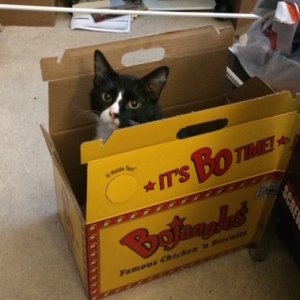
by john | Feb 12, 2015 | Literate Liquors
Wherein I talk about anthologies, and my cat jumps into a chicken box.


 situations made an impression on me. In one case, it was late at night, we were back home in what should have been our stomping grounds, and we missed a turn on a rural road. No problem, we had a pretty good idea of where we were, and we took the next left, expecting it to cut across. The blacktop road went from two lanes to one lane, then became a gravel road, then a dirt road. This was before GPS. I thought our odds were good of ending up in front of someone’s barn, facing a big German Shepherd and the business end of someone’s shotgun.
situations made an impression on me. In one case, it was late at night, we were back home in what should have been our stomping grounds, and we missed a turn on a rural road. No problem, we had a pretty good idea of where we were, and we took the next left, expecting it to cut across. The blacktop road went from two lanes to one lane, then became a gravel road, then a dirt road. This was before GPS. I thought our odds were good of ending up in front of someone’s barn, facing a big German Shepherd and the business end of someone’s shotgun.


